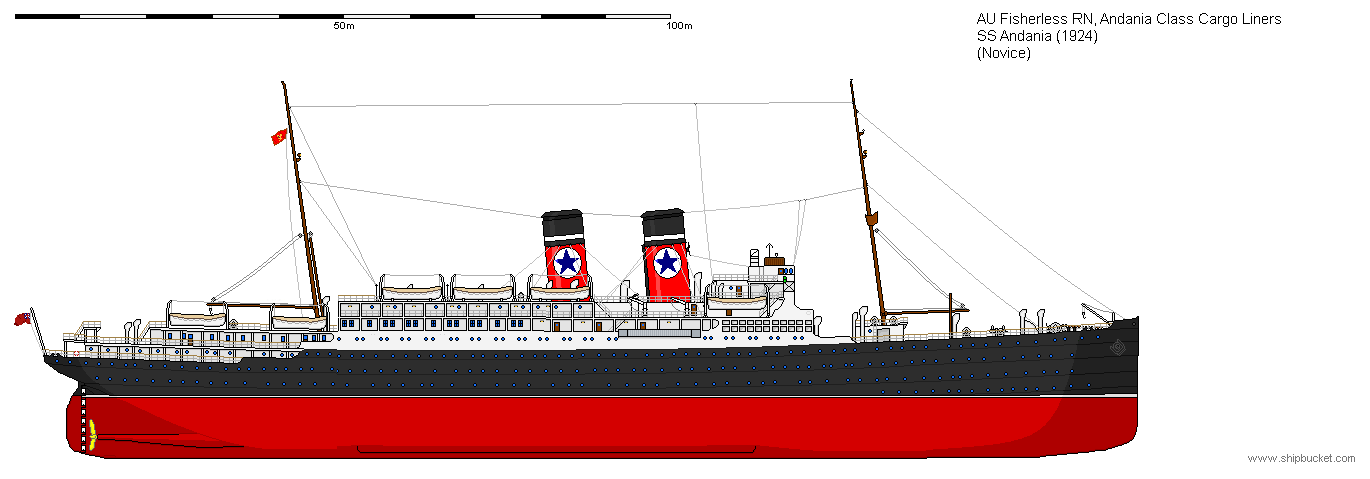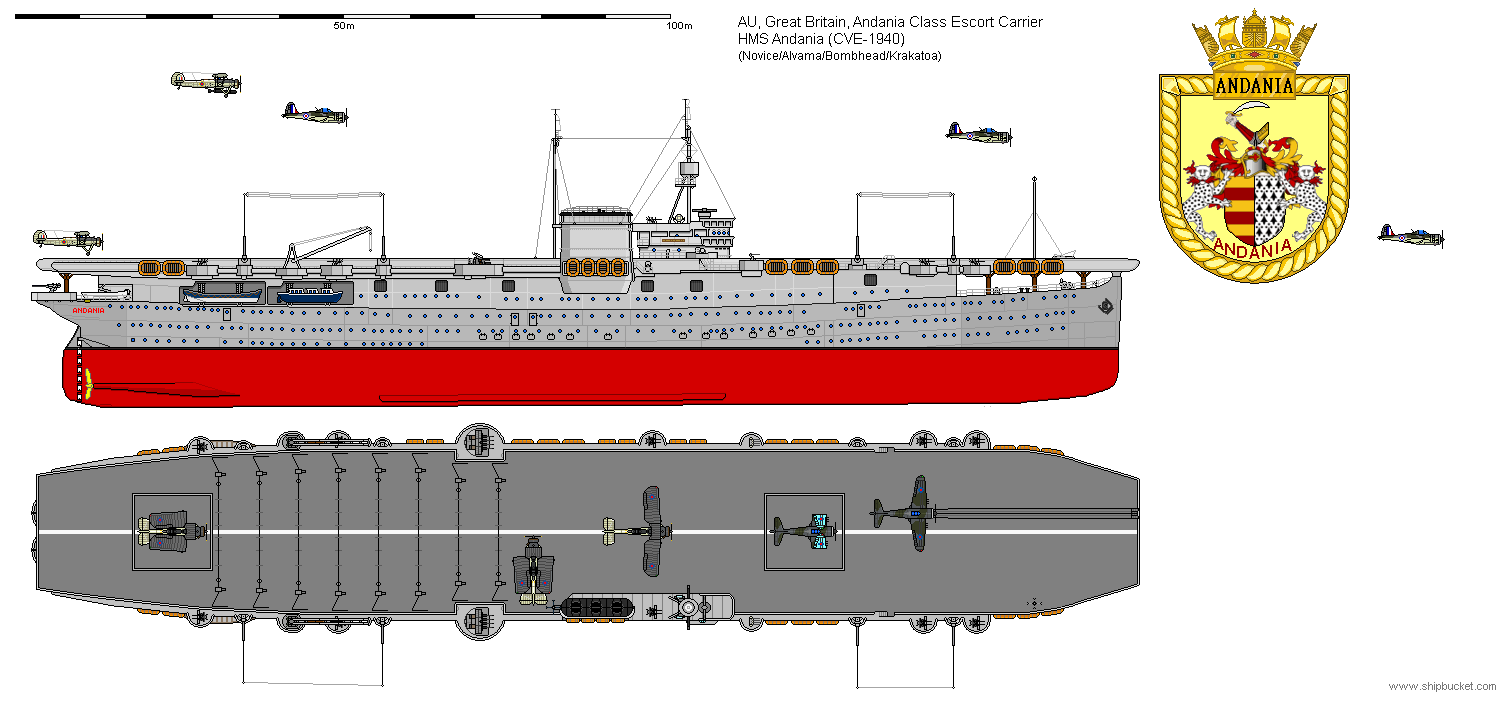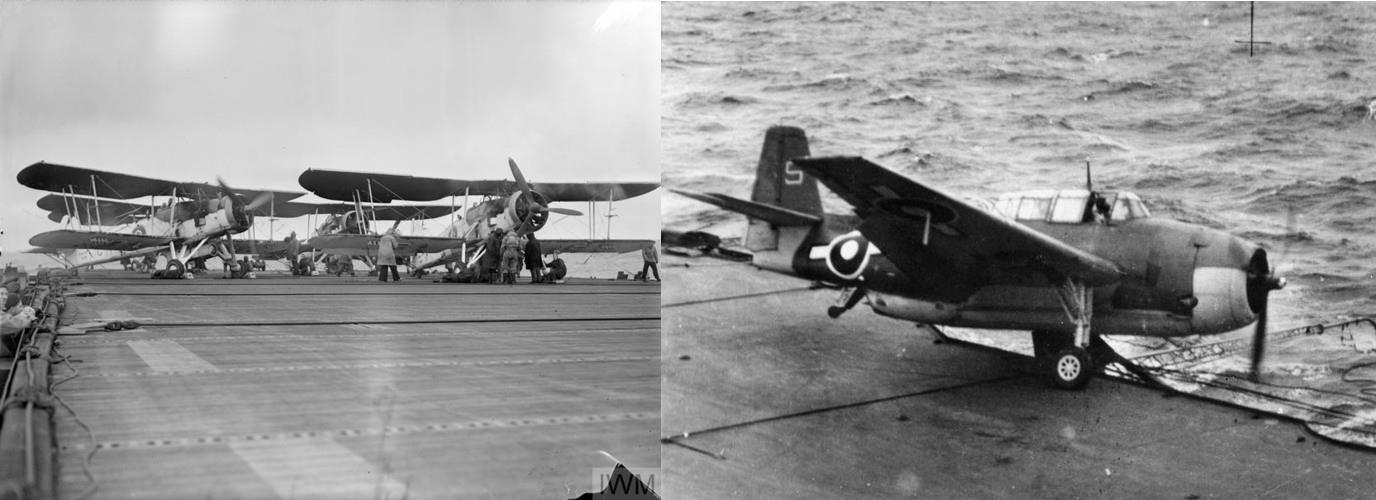With the signing of the WNT, all classes of major warships now had limits. Aircraft Carriers was no exception. With the carriers built, converted or under construction Britain had 70,000 tons left for future construction. If two large and one smaller carrier were built with that allowance then that would be it. The RN considered that in time of war it would need more of these vessels and so would need other ships that could be converted quickly to this use. A study was done on the type of vessel that would be most useful and quick to convert. The end result was a ship with approximately a 550 foot flight deck, 14-15,000 tons, 20-22 knots, able to fit a hangar to take 20+ aircraft. Those dimensions were chosen as they already existed in the cargo liner type merchantmen. The firm Cunard was contacted, as they were the largest British firm operating such vessels, and a deal done for RN assistance with six ships. This was the 'A' class ships built for Cunard during 1924-1927. For the next 15 years the ships plied their trade all over the world. On the outbreak of war, the six ships were scattered across the globe, one in the Indian Ocean, two in the South Atlantic, and the last three in the North Atlantic. One of those three was in Liverpool awaiting passengers and cargo. The ship was immediately requisitioned and sent to Belfast for Harland and Wolf to do the conversion work. The other five were ordered to complete their journeys and return to the UK. Builders would be allocated on arrival.

The conversion of these ships was quite comprehensive. The plans for conversion had been around since the ships were built. Taken out every few years, dusted off, updated and returned to their slot. By the time the conversion of the Andania was complete it looked like a miniature of the Fleet Carriers in RN service. Each conversion took approximately 12 months. The Andania's conversion took 13 months (being the first) and after working up, spent the next six months in league with the Argus, training new pilots in deck landing. In April 1941 the Andania was relieved of this duty by another of the class, joined up with an escort group working out of Liverpool on the North Atlantic run. By this time of the war, the North Atlantic was a killing ground for U-boats over merchantmen. Not enough escorts, little or no air cover gave the U-Boats the run of the roost. Two of Andania's sister ships were already on the North Atlantic run and their actions were just starting to be noticeable in the number of merchantmen from their convoys making port compared to those unsupported. It would be another six months before all of the Andania class would be at sea and helping in the U-Boat war. By then more austere conversions would also be completed and starting to enter the battle.

Displacement: 14,780 tons normal, 22,500 tons full load.
Dimensions: 556 x 74 x 26 feet
Machinery: 2 shaft, steam turbines, 17,000shp
Speed: 23 knots
Endurance: 9,000 miles at 15 knots
Armour: 3" box round armouries
Armament:
2 x 4" (2x1)
8 x 2pd (2x4)
20 x 20mm (10x2)
Aircraft: 24
Crew: 900
Throughout their service the 'bomber' of choice was the Fairey Swordfish. While obsolete by the outbreak of war, several of the smaller carriers were unable to handle the later and bigger Fairey Battle, so the Swordfish was kept in production. With the entry of the Andania class into the war, the Swordfish was kept in production to supply these ships. The Gloster Griffon with its power to weight ratio was able to fly off and on with no problems. The other fighter used off these ships was the Grumman Martlet (Wildcat), which was also of a small size. The normal aircraft complement was one squadron of Swordfish to half a squadron of fighters. From 1943, those ships not on convoy duties would have the Swordfish replaced with a squadron of Grumman Avengers. These ships aided the fleet carriers in supplying support for the retaking of places like Madagascar and other Vichy French aligned areas.

